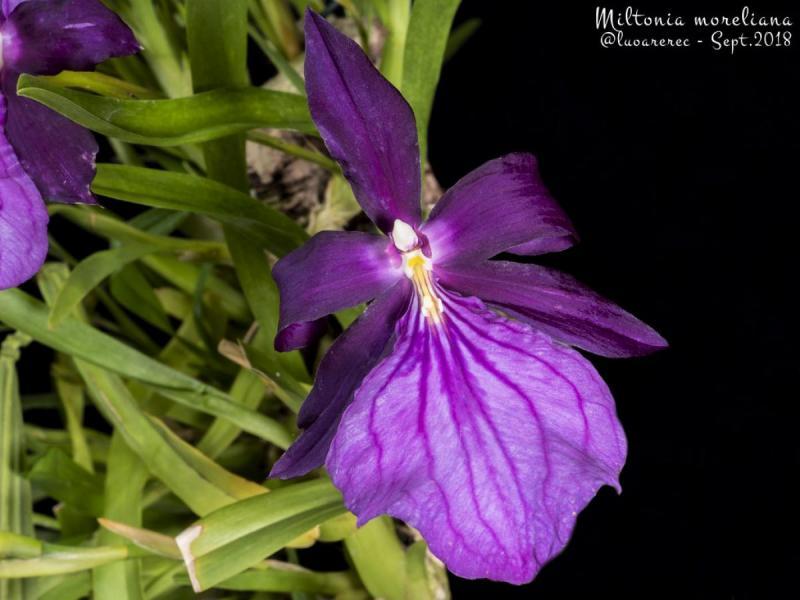Miltonia moreliana
Also known as: Morel's Miltonia or Miltonia spectabilis h.f. atropurpurea Miltonia spectabilis h.f. purpureo-violacea Miltonia moreliana h.f. concolor Miltonia moreliana h.f. alba Miltonia morelii Miltonia moreliana var. atrorubens Miltonia spectabilis var. moreliana Miltonia rosea Miltonia spectabilis var. atrorubens Miltonia warneri in the subfamily: Epidendroideae
Native to: Espirito Santo - Brazil
General Information
Morel's Miltonia is a sympodial cool to hot growing orchid belonging to the sub family Epidendroideae native to Brazil. It is named after the French Orchid Nursery near Paris in the 19th century.
Plant Description
Sympodial. Grows to 18-25cm. Each new growth has numerous leaves that grow to 10-30cm long. Pseudobulbs grow to 1-10cm
Substrate(s)
- Coarse
Climate
These orchids grow in cool climates, at low altitudes, in cool plains, forests or coastal scrub.
They are forgiving of humidity variances as long as temperatures are kept on the cool side. They can do well outdoors in the garden in cool and temperate areas, though it is important that they are protected from warm dry winds. They can enjoy morning sun especially in winter but will need protection from the hot sun in the afternoon and during summer. With some acclimatisation they may be able to receive more sun.
Grows at low to high elevations. Rainfall ranges from 53mm to 160mm per day, heaviest in June and lightest in February. Humidity ranges from 82% to 86%, highest in March and lowest in July. Temperature ranges from 13C to 26C, highest in August (18C to 26C) and lowest in January (13C to 20C).
Watering
These orchids prefer a wet-dry cycle between waterings, they should be watered frequently but only when the moisture is approaching dryness, where the pot feels light and/or the media looks dry. Keep an eye on mounted orchids in warm weather as they may dehydrate quickly.
Keep moisture levels up during hot weather as the plant is prone to dehydrationFertiliser
These orchids do not need to be regularly fertilised and roots may be sensitive to salt build-up, dying back and therefore impairing the plants growth or even killing it.
If fertilising, use half to quarter of the recommended amount of fertiliser. If they receive fertiliser as part of a collection, be sure to flush out the pots regularly with fresh water and monitor the roots by checking how much resistance is given by the plant when nudged in its pot or mount. If the plant becomes wobbly or loose, repot in fresh mix or rinse the media/mount thoroughly and do not fertilise for at least 3 months.
Use balanced fertiliser year round. Be sure to flush out excess fertiliser by running water through the media regularly year round. Apply fertiliser regularly at half strength year round. This plant is sensitive so apply fertiliser sparingly at one quarter recommended strength or less. Use a low Nitrogen fertiliser year round. Use a high Phosphorous fertiliser year round. Reduce fertiliser when plant is dormant during Spring.Potting
Due to the growth nature of these plants they are best mounted onto cork, tree fern slabs, or even trees if the climate suits. Water regularly especially in hot weather.
This plant does very well in baskets or suspended pots This plant does well mounted to Cork slabs.

















